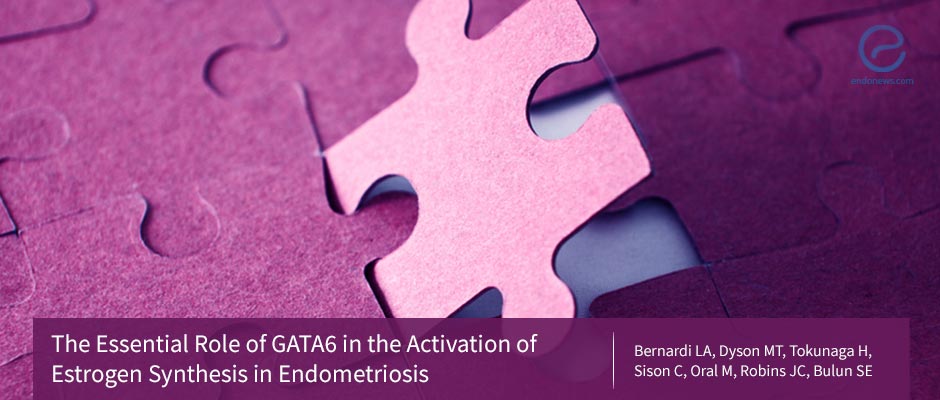Role of GATA6 in Endometriosis
May 22, 2018
Could it be the missing piece of the jigsaw?
Key Points
Highlights:
- Researchers identified a new role for GATA6, as a protein that is crucial in transforming endometrial stromal cells into endometriotic cells capable of invading surrounding tissues and causing endometriosis.
Importance:
- A deeper understanding of the biology of endometriosis can help researchers develop new strategies to better diagnose and treat the disease.
What's done here:
- Researchers used endometrial stromal cells obtained from women with and without endometriosis who underwent surgery.
- They conducted a number of experiments in the laboratory to make these cells produce GATA6 protein on its own or together with NR5A1 protein.
- In a parallel experiment, they blocked these cells from producing GATA6 on its own or together with NR5A1.
- They then analyzed the activity of genes involved in the production of estrogen from cholesterol, a hallmark of endometriotic cells.
Key results:
- GATA6 was acting on two proteins involved in estrogen biosynthesis in endometrial stromal cells from women with endometriosis and on three proteins in normal endometrial stromal cells.
- The activation of GATA6 and NR5A1 at the same time was sufficient to transform endometrial stromal cells into estrogen producing endometriotic-like cells.
Limitations:
- The experiments were all conducted in cells grown in vitro and not in living animals or people, and therefore the results may not fully reflect what happens in vivo.
- The production of estrogen from cholesterol is an important feature of endometriotic cells but does not in itself define endometriosis. This study focused on estrogen production and did not consider other properties of endometriotic cells such as resistance to programmed cell death and production of inflammatory cell singling molecules.
Lay Summary
Researchers discovered that a protein called GATA6 is crucial in turning endometrial stromal cells into endometriotic-like cells, which may be capable of invading surrounding tissues and growing outside the uterus.
This knowledge can be used to create cell models that can be used in the laboratory to further study the biology of endometriosis. As the impact of GATA6 is better understood, new strategies to diagnose and treat endometriosis can also be developed, according to the authors of the study that was published in the scientific journal Reproductive Sciences.
Endometrial stromal cells look just like the cells of the endometrium stroma, but unlike these, they start producing estrogen, the primary female sex hormone, as well as certain cell signaling molecules that are important for inflammation. Estrogen plays a crucial role in the development and persistence of endometriosis because it promotes the growth of ectopic tissue in places where it should not.
It was already known that a protein called NR5A1 is critical to activate the production of estrogen by endometriotic stromal cells. But this protein on its own is not sufficient. In the present study researchers identified another protein called GATA6 as the missing piece of the jigsaw. The combined action of these two proteins seems to be required to enable the production of estrogen by normal endometrial stromal cells thus transforming them into endometriotic-like cells.
To show this, the researchers grew in the laboratory endometrial stromal cells and experimentally made them produce GATA6 alone or in combination with NR5A1. In a reverse experiment, they blocked the production of these two proteins, alone or in combination.
They then looked at five genes that are known to be involved in the production of estrogen and measured how active they were.
They found that in primary endometrial stromal cells obtained from women with endometriosis, the presence of both GATA6 and NR5A1 was required and sufficient to activate all five genes involved in estrogen production. Similarly, blocking both GATA6 and NR5A1 at the same time, halted the production of estrogen.
“[The] simultaneous addition of GATA6 and NR5A1 to an endometrial stromal cell is sufficient to transform it into an endometriotic-like cell, manifested by the activation of the estradiol biosynthetic cascade,” the researchers concluded.
Research Source: https://www.ncbi.nlm.nih.gov/pubmed/29402198
estrogen endometriotic stromal cells GATA6 NR5A1

